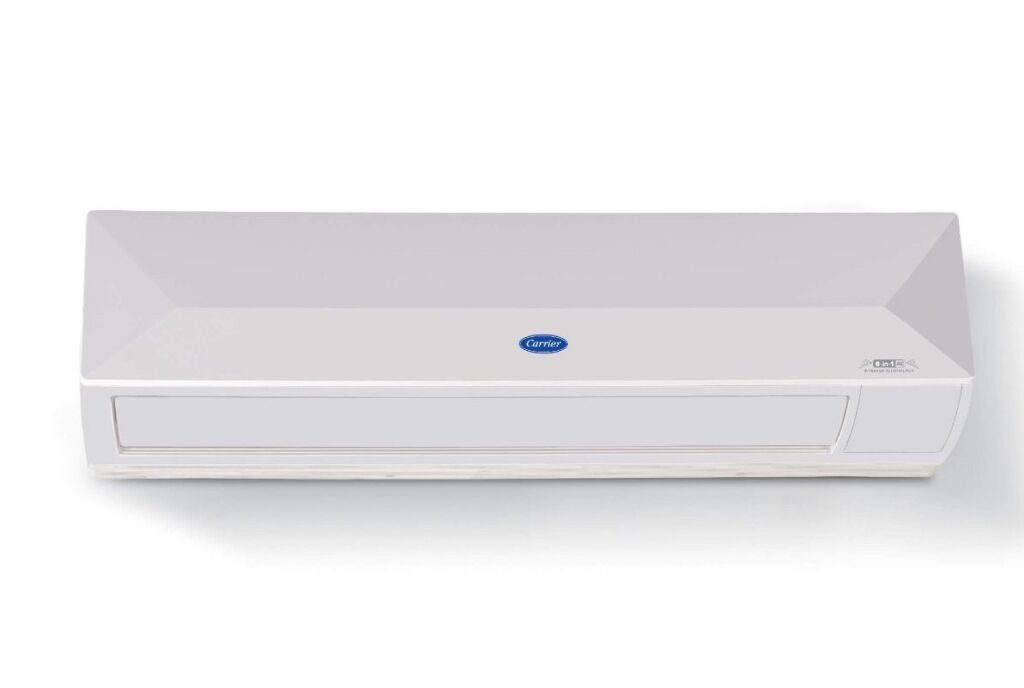
Air conditioners work in a complex manner. The task of cooling an allocated room is not an easy deal. Among the most popular ACs, split air conditioner models are the most chosen. Mainly, they are cost-effective and serve for longer periods. Also, air conditioner split systems are known for their cooling efficiency, as they can effortlessly cool a space in less time.
But how exactly do these split ACs work, and how energy-efficient are these cooling units? This article will help you understand.
Definition of Split Air Conditioners?
Split air conditioners are like other air conditioning systems whose basic function is to cool a given space. But unlike traditional models, split systems come with two major units. A split air conditioner has an indoor and outdoor unit for undergoing a cooling mechanism. The compressor of the split AC is in the outdoor unit which determines the speed of cooling. Those commercial spaces where users want individual cooling rooms are opting for air conditioner split units that can cool the room faster than any central AC system.
Traditional and Inverter Split ACs
In the case of traditional units, the compressor speed is fixed, which means that the motor can either turn on or off to reach the set temperature. It, in turn, charges a lot of extra electricity bills. As a way out, the inverter air conditioner split models try to solve the energy efficiency issue. It runs at a variable speed that maintains constant cooling throughout the running time. It is beneficial for two reasons: firstly, it offers a comfortable cooling experience, and most importantly, it can prove to be a big-time monthly investment.
How Does a Split Air Conditioner Work?
Air conditioner split model is designed to cool or heat a given indoor space using specific components. It moves the heat from inside to outside and thereby serves with cooler air inside. Here’s how-
- Evaporator Coil and Blower
Starting with the indoor unit, a split air conditioner unit consists of an evaporator coil and a blower fan. The evaporator coil contains cold-pressure refrigerant. It absorbs the heat from the indoor air and passes it over the coil. Following that, the blower fan would pass the cooler air into the living space with the help of the duct in the room.
- Circulation of Refrigerant
The intermediary step in the process is circulating the refrigerant that would help in absorbing the heat from inside the air. Following the absorption, the refrigerant would convert the low-pressure liquid into low-pressure gas. After that, the refrigerant gas of the split air conditioner will pass on using insulated pipes to the outdoor unit.
- Condenser and Compressor
The outdoor unit includes the compressor and the condenser, thereby determining the overall cooling variables. Firstly, the compressor raises the pressure of the refrigerant, thereby raising the temperature. Then, this high-pressure hot refrigerant passes through the condenser coil, and following that, the fan blows the outdoor air. It helps release the heat outside, causing the refrigerant to cool down again into a liquid state.
- Expansion
Then, this high-pressure liquid would go through an expansion device like the electronic expansion valve, which can lower the pressure. This helps drop the pressure and make it cooler again. The cycle then repeats for consistent cooling.
FAQ
- How Split ACs Differ from Window ACs?
The main difference between split air conditioner models and window ACs is in terms of design and overall structure. Unlike split ACs, window model components are present within a single metallic cabinet and ensure the cooling of the room gradually. The compressor, the window air cooling device, is within the single box unit, making the system noisier than the split ACs. Also, the capacity of split AC compressors is much better than that of Window ACs, which can only cool smaller rooms.
End Thoughts
Split air conditioner systems cool efficiently and are easier to install with little professional help. They are ductless AC types, so servicing or repairing is not a big deal. They comprise two units that jointly work to better cool a given space. The compressors of modern inverter split systems are also improved, working at variable speeds. Such adjustments save a lot of energy and provide consistent cooling across a space.
Keep an eye for more latest news & updates on Buzz Feed!






